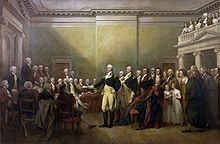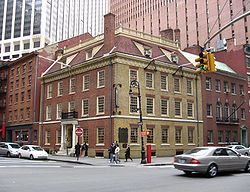“Punting the Pundits” is an Open Thread. It is a selection of editorials and opinions from around the news medium and the internet blogs. The intent is to provide a forum for your reactions and opinions, not just to the opinions presented, but to what ever you find important.
Thanks to ek hornbeck, click on the link and you can access all the past “Punting the Pundits”.
Follow us on Twitter @StarsHollowGzt
New York Times Editorial Board: A Search for Justice in the Eric Garner Case
The Staten Island grand jury must have seen the same video everyone else did: the one showing a group of New York City police officers swarming and killing an unarmed black man, Eric Garner. [..]
The imbalance between Mr. Garner’s fate, on a Staten Island sidewalk in July, and his supposed infraction, selling loose cigarettes, is grotesque and outrageous. Though Mr. Garner’s death was officially ruled a homicide, it is not possible to pierce the secrecy of the grand jury, and thus to know why the jurors did not believe that criminal charges were appropriate.
What is clear is this was vicious policing and an innocent man is dead. Another conclusion is also obvious. Officer Pantaleo was stripped of his gun and badge; he needs to be stripped of his job. He used forbidden tactics to brutalize a citizen who was not acting belligerently, posed no risk of flight, brandished no weapon and was heavily outnumbered.
Eugene Robinson: What America’s police departments don’t want you to know
Michael Brown’s death was part of a tragic and unacceptable pattern: Police officers in the United States shoot and kill civilians in shockingly high numbers. How many killings are there each year? No one can say for sure, because police departments don’t want us to know.
According to the FBI’s Uniform Crime Report, in 2013 there were 461 “justifiable homicides” by police – defined as “the killing of a felon by a law enforcement officer in the line of duty.” In all but three of these reported killings, officers used firearms.
The true number of fatal police shootings is surely much higher, however, because many law enforcement agencies do not report to the FBI database. Attempts by journalists to compile more complete data by collating local news reports have resulted in estimates as high as 1,000 police killings a year. There is no way to know how many victims, like Brown, were unarmed. [..]
Liberals and conservatives alike should be outraged at the frequency with which police in this country use deadly force. There is no greater power that we entrust to the state than the license to take life. To put it mildly, misuse of this power is at odds with any notion of limited government.
California raised taxes, Kansas cut them. California did better
Ever since economist Arthur Laffer drew his namesake curve on a napkin for two officials in President Richard Nixon’s administration four decades ago, we have been told that cutting tax rates spurs jobs and higher pay, while hiking taxes does the opposite.
Now, thanks to recent tax cuts in Kansas and tax hikes in California, we have real-world tests of this idea. So far, the results do not support Laffer’s insistence that lower tax rates always result in more and better-paying jobs. In fact, Kansas’ tax cuts produced much slower job and wage growth than in California.
The empirical evidence that the Laffer curve is not what its promoter insists joins other real-world experience undermining the widely held belief that minimum wage increases reduce employment and income.
Steven W. Thrasher: The Eric Garner decision confirms a holiday of horrors. ‘Tis the season for more protest, not less
Pretending that we should keep calm and carry on – that we even can – is a bigger fantasy than Santa Claus
On Wednesday evening in New York City, as dusk fell into night, another grand jury failed to indict another police officer for killing another unarmed black man in America – this one a bona-fide homicide caught on camera. On Wednesday night in New York City, we protest. And then they planned in this same town – on this, the same night in America when the law continued to allow cops to kill black men – to light the most famous Christmas tree in the country. [..]
And, yes, the protesters should be peaceful – but we need to be disruptive. Because the same structural racism exists in New York City that does in Ferguson, as it does everywhere in the United States. As President Obama said on Wednesday night: “This is an American problem.” And no holiday lights should be lit while the light of justice is snuffed out for so many.
Of course nobody wants to watch a mirror image of the violence that erupted in Ferguson fewer than 10 days ago. But the Rockefeller Center tree lighting makes for a primetime-TV image of this country, next to New York’s protest, which is sadly like the surrealism of the Obama-next-to-protests split- and the irony of the Season’s Greetings-banner-over-the-riot-gear-cops photo. It’s a diptych of injustice on steroids.
Seums Milne: Cuba’s extraordinary global medical record shames the US blockade
From Ebola to earthquakes, Havana’s doctors have saved millions. Obama must lift this embargo
Four months into the internationally declared Ebola emergency that has devastated west Africa, ]leads the world in direct medical support http://www.theguardian.com/wor… to fight the epidemic. The US and Britain have sent thousands of troops and, along with other countries, promised aid – most of which has yet to materialise. But, as the World Health Organisation has insisted, what’s most urgently needed are health workers. The Caribbean island, with a population of just 11m and official per capita income of $6,000 (£3,824), answered that call before it was made. It was first on the Ebola frontline and has sent the largest contingent of doctors and nurses – 256 are already in the field, with another 200 volunteers on their way. [..]
But the island is still suffocated by the US trade embargo that has kept it in an economic and political vice for more than half a century. If Barack Obama wants to do something worthwhile in his final years as president he could use Cuba’s role in the Ebola crisis as an opening to start to lift that blockade and wind down the US destabilisation war.
Jessica Valentii: If we truly valued motherhood, we would actually do something to help pregnant women
We’ve all heard the platitudes: Motherhood is the most important job in the world. If mothers made a parenting salary – we’re chefs, chauffeurs, housekeepers and office managers! – we’d be bazillionaires.
Come on. We’re not even willing to let a pregnant woman hold on to a job.
On Wednesday, the US supreme court will hear arguments in a case to decide whether the Pregnancy Discrimination Act requires employers to provide accommodations for pregnant workers. The case stems from former UPS worker Peggy Young, who was put on unpaid leave after her doctor recommended she not lift packages heavier than 20 pounds.
All the Hallmark-card sentiment in the world doesn’t change the reality that whether you’re in the highest court in all the land or at the neighborhood playground, pregnant women get treated like second-class citizens and mothers are expected to “do it all” with little more than a condescending pat on the head.

 For me the creepiest thing about
For me the creepiest thing about 


Recent Comments